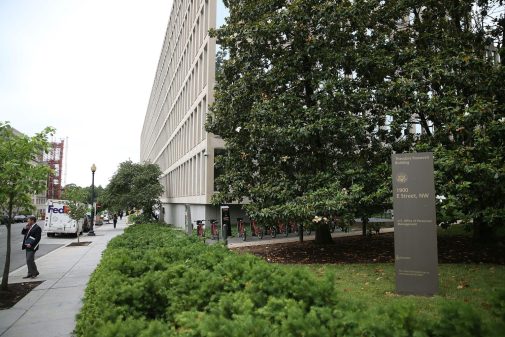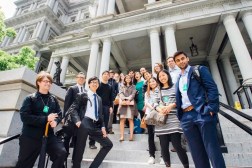OPM Innovation Lab leads USAJobs rebuild with agile
USAJobs.gov, the federal job listings website plagued with user experience issues, could have a new look and feel as early as this winter due in part to the agile development process used by the redesign team.
Deep in the basement of the Office of Personnel Management building, the office’s Innovation Lab has joined forces with the USAJobs.gov team using techniques like weekslong scrum sprints and rapid iteration to make a more user-friendly website for federal job applicants. OPM Director Katherine Archuleta called for a redesign of the website in March as part of her Recruitment, Engagement, Diversity and Inclusion — or REDI — initiative.
Less than three months since the director’s announcement, the combined team will soon move into prototyping and user testing of a new design. Innovation Lab Director Stephanie Wade said her team hopes to “start showing the public-facing changes by the winter.” Wade told FedScoop this rapid development is not only key to getting a new USAJobs.gov to applicants sooner, but it could help them produce a better final product.
“It’s about rapid iteration,” Wade said. “It’s not about trying to hold our breaths and spending years and years and years getting it perfect and then releasing it, because that’s often where things fall down.” Instead, the small team will release pieces of the final product in what she calls “scrum sessions.”
“There isn’t going to be one big release,” she said.
Innovation Lab lead designer Sean Baker and USAJobs project manager David Garber write ideas from user interviews on Post-its. (FedScoop)
So far, the team has come up with some high-level plans for the new design. While Wade couldn’t reveal some of the ideas, she did explain that it’s based on the responses of the qualitative user interviews — with applicants and HR specialists — her team has done across the country.
“We spend a lot of time getting to know people’s emotional drivers and needs, because that’s influencing behavior,” the lab director said. And it’s important to dig deep because people often don’t know what they really want, she said, citing the Henry Ford quote: “If I had asked people what they wanted, they would have said faster horses.”
Post-it notes are a critical tool for the USAJobs.gov redesign. Wade and her team write down observations gleaned from their interviews and stick them to a wall to better visualize what people said. Seeing all the data at once helps with what Wade calls “insight generation.”
“We externalize all of our data,” she said. “We look at the quotes or things we observe. It’s important in human-centered design to watch what people do because they’ll say one thing and do another.”
She added, “Our brains can actually understand and make insightful connections a lot better when the data is actually visually in front of us as opposed to being buried in spreadsheets.” This helps the team find the core challenges that aren’t always immediately apparent, Wade said. It helps them tease out “what is the root and the real kind of provocative things that people aren’t necessarily saying but is actually going on.”
At this point, the team is still mapping some broad directions it might take with the new design before moving to the rapid prototyping stage of the agile development. But Wade is confident in her team’s use of human-centered, agile design.
“The government is evolving toward a culture of ‘let’s makes things better as fast as we can,’ and being really thoughtful about that balance of iteration and something that’s really working, and the balance of waiting too long to maybe make a difference,” she said. Likewise, with a focus around the humans using the website, “it gives us the capacity to reignite our passion and be closer to the people we’re serving. And vice versa, this helps bridge a gap with the public being able to interface with government directly and provide their ideas about how to make it better.”






